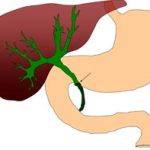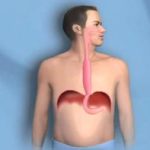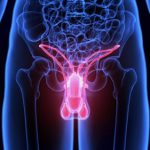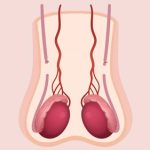Prostatectomy in Iran
A prostatectomy is a surgical procedure for the partial or complete removal of the prostate. It may be performed to treat prostate cancer or benign prostatic hyperplasia. A common surgical approach to prostatectomy includes making a surgical incision and removing the prostate gland (or part of it).
How much does prostatectomy surgery cost in Iran?
The cost of the prostate surgery varies a lot from a country to another. It also depends on the type of prostate surgery you choose. In the United States of America, the prices range from $10,000 up to $135,000. However, you can have prostatectomy in Iran for a lesser price as the prices range from $1,800 to $2,500.
Why it’s done
Most often, prostatectomy is done to treat localized prostate cancer. It may be used alone, or in conjunction with radiation, chemotherapy and hormone therapy.
Radical prostatectomy is surgery to remove the entire prostate gland and surrounding lymph nodes to treat men with localized prostate cancer. A surgeon can perform a radical prostatectomy using different techniques, including:
- Robot-assisted radical prostatectomy. The surgeon makes five to six small incisions in your lower abdomen to remove the prostate. He or she sits at a console, using instruments attached to a computer-assisted mechanical device (robot). The robotic device allows a more precise response to movement of the surgeon’s hands.
- Open radical prostatectomy. The surgeon typically makes an incision in your lower abdomen to remove the prostate.
Less often, simple prostatectomy may be recommended for men with severe urinary symptoms and very enlarged prostate glands. Enlarged prostate glands are known as benign prostatic hyperplasia, or BPH.
Simple prostatectomy is usually performed as a minimally invasive procedure with robotic assistance. It’s not often done as an open procedure anymore.
Simple prostatectomy to treat BPH doesn’t always involve removing the entire prostate, as in a radical prostatectomy. Instead, this procedure removes just the part of the prostate that’s blocking the flow of urine. The surgery eases urinary symptoms and complications resulting from blocked urine flow, including:
- A frequent, urgent need to urinate
- Difficulty starting urination
- Slow (prolonged) urination
- Increased urination frequency at night
- Stopping and starting again while urinating
- The feeling that you can’t completely empty your bladder
- Urinary tract infections
- Inability to urinate
Mayo Clinic urologists use advanced endoscopic techniques to address these symptoms without incisions in most cases.
Your surgical team will discuss the advantages and disadvantages of each technique, as well as your preferences, to determine which approach is best for you.
Risks
Radical prostatectomy risks
In addition to the risks associated with any surgery, risks with radical prostatectomy include:
- Bleeding
- Urinary tract infection
- Urinary incontinence
- Erectile dysfunction (impotence)
- Narrowing of the urethra or bladder neck
- Formation of cysts containing lymph (lymphocele)
At Mayo Clinic, the urologists who perform prostatectomy procedures have advanced training and extensive experience in all aspects of the surgery. Much of this expertise stems from the high numbers of patients treated: More robotic surgery is performed at Mayo Clinic than anywhere else in the world. Additionally, Mayo’s multidisciplinary approach ensures the lowest complication rates and delivers the best outcomes possible for people who have this surgery.
Simple prostatectomy risks
Although simple prostatectomy works well at relieving urinary symptoms, it has a higher risk of complications and a longer recovery time than other enlarged prostate procedures such as transurethral resection of the prostate (TURP), laser PVP surgery or holmium laser prostate surgery (HoLEP).
Risks of open simple prostatectomy include:
- Bleeding
- Urinary tract infection
- Urinary incontinence
- Dry orgasm
- Erectile dysfunction (impotence)
- Narrowing (stricture) of the urethra or bladder neck How you prepare
- Before surgery, your doctor may want to do a test that uses a visual scope to look inside your urethra and bladder (cystoscopy). Cystoscopy lets your doctor check the size of your prostate and examine your urinary system. Your doctor may also want to perform other tests, such as blood tests or tests to specifically measure your prostate and to measure urine flow.
- Follow your doctor’s instructions on what to do before your treatment. Here are some issues to discuss with your doctor:
- Food and medications
- Your medications. Tell your doctor about any prescription or over-the-counter medications or supplements you take. This is especially important if you take blood-thinning medications, such as warfarin (Coumadin) or clopidogrel (Plavix), and nonprescription pain relievers, such as aspirin, ibuprofen (Advil, Motrin IB, others) or naproxen sodium (Aleve, others). Your surgeon may ask you to stop taking medications that increase your risk of bleeding several days before the surgery.
- Medication allergies or reactions. Talk to your care team about any allergies or reactions you have had to medications.
- Fasting before surgery. Your doctor will likely ask that you not eat or drink anything after midnight. On the morning of your procedure, take only the medications your doctor tells you to with a small sip of water.
- Bowel prep before surgery. You may be given a kit and instructions for giving yourself an enema to clear your bowels before surgery.
- Clothing and personal items
- Plan ahead to avoid wearing these items into surgery:
- Jewelry
- Eyeglasses
- Contact lenses
- Dentures
- Arrangements after surgery
- Ask your doctor how long you’ll be in the hospital. You’ll want to arrange in advance for a ride home, because you won’t be able to drive immediately following surgery.
- Activity restrictions
- You may not be able to work or do strenuous activities for several weeks after surgery. Ask your doctor how much recovery time you may need.
- What you can expect
- Before the procedure
- Prostatectomy is usually done using general anesthesia, which means you’re not awake during the procedure. Your doctor may also give you an antibiotic right before surgery to help prevent infection.
During the procedure
- Robot-assisted radical prostatectomy. Your surgeon sits at a remote-control console a short distance from you and the operating table and precisely controls the motion of the surgical instruments using two hand-and-finger control devices. The console displays a magnified, 3D view of the surgical area that enables the surgeon to visualize the procedure in much greater detail than in traditional laparoscopic surgery.
The robotic system allows smaller and more-precise incisions, which for some men promotes faster recovery than traditional open surgery does. Just as with open retropubic surgery, the robotic approach enables nerve-sparing techniques that may preserve both sexual potency and continence in the appropriately selected person.
- Open radical prostatectomy. Your surgeon makes an incision in your lower abdomen, from below your navel to just above your pubic bone. After carefully dissecting the prostate gland from surrounding nerves and blood vessels, the surgeon removes the prostate along with nearby tissue. The incision is then closed with sutures.
- Simple prostatectomy. At the start of the procedure, your doctor may insert a long, flexible viewing scope (cystoscope) through the tip of your penis to see inside the urethra, bladder and prostate area. Your doctor will then insert a tube (Foley catheter) into the tip of your penis that extends into your bladder to drain urine during the procedure. The location of incisions will depend on what technique your doctor uses. If you also have a hernia or bladder problem, your doctor may use the surgery as an opportunity to repair it.
Once your doctor has removed the part of your prostate causing symptoms, one to two temporary drain tubes may be inserted through punctures in your skin near the surgery site. One tube goes directly into your bladder (suprapubic tube), and the other tube goes into the area where the prostate was removed (pelvic drain).
After the procedure
After surgery you should expect that:
- You’ll be given IV pain medications. Your doctor may give you prescription pain pills to take after the IV is removed.
- Your doctor will have you walk the day of or the day after surgery. You’ll also do exercises to move your feet while you’re in bed.
- You’ll likely go home the day after surgery. When your doctor thinks it’s safe for you to go home, the pelvic drain is taken out. You may need to return to the doctor in one or two weeks to have staples taken out.
- You’ll return home with a catheter in place. Most men need a urinary catheter for seven to 10 days after surgery. Full recovery of urinary control can take up to a year after surgery.
Make sure you understand the post-surgery steps you need to take, and any restrictions such as driving or lifting heavy things:
- You’ll need to resume your activity level gradually. You should be back to your normal routine in about four to six weeks.
- You’ll need to see your doctor a few times to make sure everything is OK. Most men see their doctors after about six weeks and then again every three months for the first year, and twice in the second year after surgery. If you have any problems or concerns, you may need to see your doctor sooner or more often.
- You’ll probably be able to resume sexual activity after recuperating from surgery. After simple prostatectomy, you can still have an orgasm during sex, but you’ll ejaculate very little or no semen. After radical prostatectomy, full recovery of erectile function may take as long as 18 months for some men.















